I founded the RISD Global Initiative (RISD GI) in 2013, shortly after coming back from a semester studying international relations at Georgetown University—my version of a “study abroad” program that I hacked together since RISD did not have policy related programs. I had been unhappy about RISD since freshman year, as there was almost no culture of awareness or action around local and global issues. But it made sense—students were simply too sleep-deprived and busy to do anything outside of their studios. On Friday nights, when normal college students were playing beer pong, we were in our respective studios breathing in sawdust or covered in charcoal.
Challenge #1: Creating a Flexible Organizational Structure for Busy People
The first 6 months of getting the RISD GI up and running was tough. I was doing it alone and it was difficult at first to attract other students who would be fully dedicated to growing this initiative with me. Eventually, I was able to recruit five core members to form the “executive team”. The executive team held regular biweekly meetings to discuss what to do for our first year. I was the president, another member was the secretary, and I set it up in away that the executive team was responsible for putting on all the programming and activities for the rest of the student body. I set it up in a rigid way where if you were part of the executive team, you were part of it 100% of the time.
However, I soon realized this structure wasn’t working for us. It became difficult to keep everyone fully committed. Generally, regular involvement with activities outside of the long studio hours wasn't easy for students. I began to see one or two folks becoming less committed over the course of the year. For example, one member took on the effort to advocate for having free New York Times newspapers on campus. It was an effort that involved gauging student interest, figuring out prices, and convincing the Office of Student Affairs that it was worth funding. Once this was achieved, which was in about three months, there was no point in requiring that member to “stay on”.
And that’s when it hit me. Why not establish a more porous organizational structure that allows students to “join” RISD GI to pursue an idea of theirs then to “leave” after it’s done?
Challenge #2: How do we establish ourselves as a student organization, and not a student club?
When I first launched RISD GI, I had to register it with the Office of Student Affairs as a club, though I had an issue with that. A college club was usually a club for a select group of people with shared interests in something specific—whether it was cycling, knitting, or breeding pigeons (it’s true, we had a pigeon club). In my view, it was inappropriate for RISD GI to be considered a club. I believed using our craft as artists and designers to respond to the pressing social, political, economic, and environmental issues around us was not optional. It was not a specific interest reserved for the few. It was our role.
To make sure we were not perceived by the administration as a student club, we met with as many high-level people in the administration and faculty as possible. I tried to get RISD GI a seat at the table. Even if we hadn’t done much as an organization at this point, we wanted to make some noise and make sure people remembered us. We met with the President, Board of Trustees, Provost, Dean of Students, Director of Global Partners and Programs, Director of International Student Services, and faculty groups. We were the first group of students invited to speak at the foundation year faculty meeting about introducing a more globally responsive curriculum to the incoming freshmen.
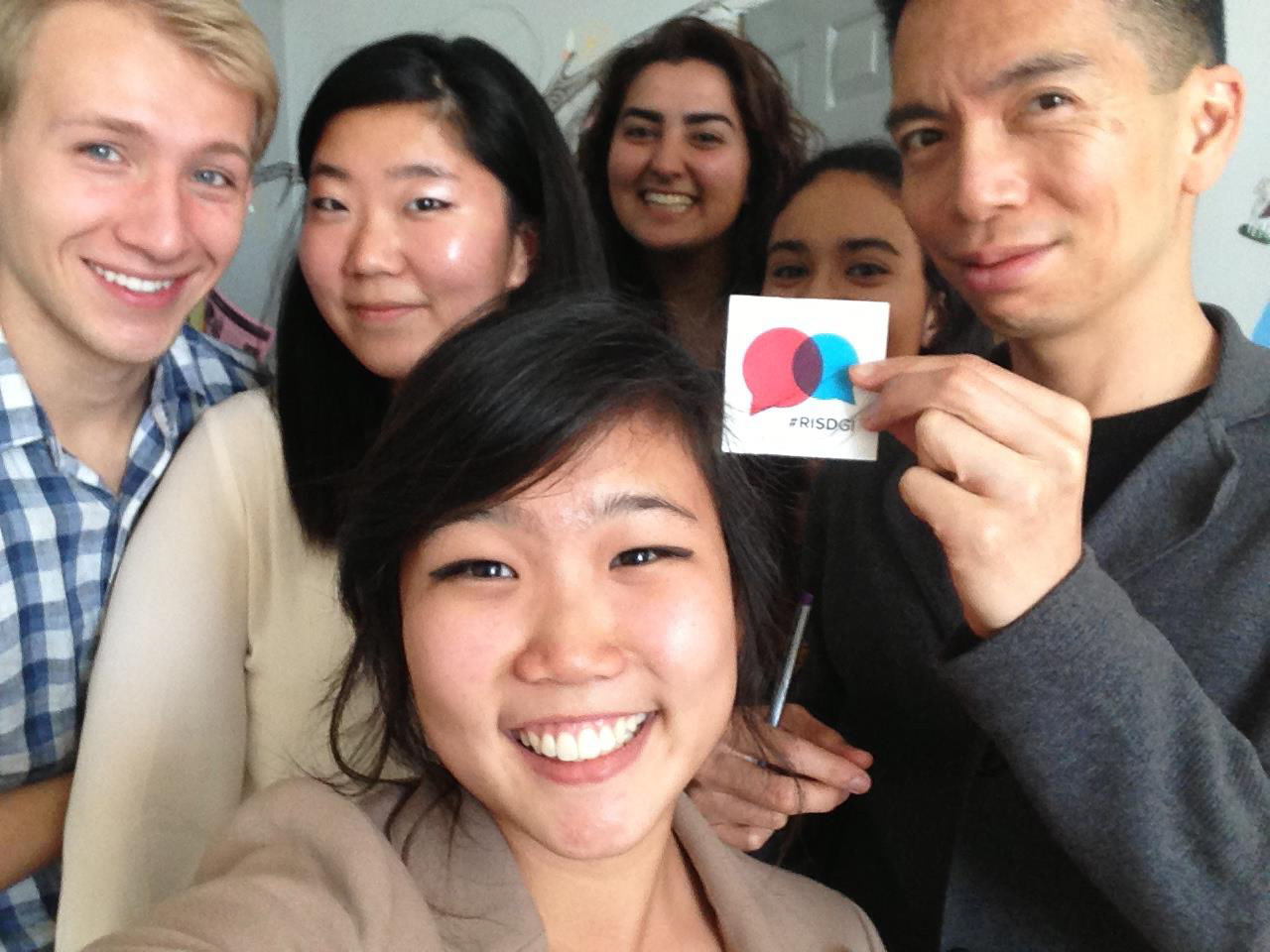
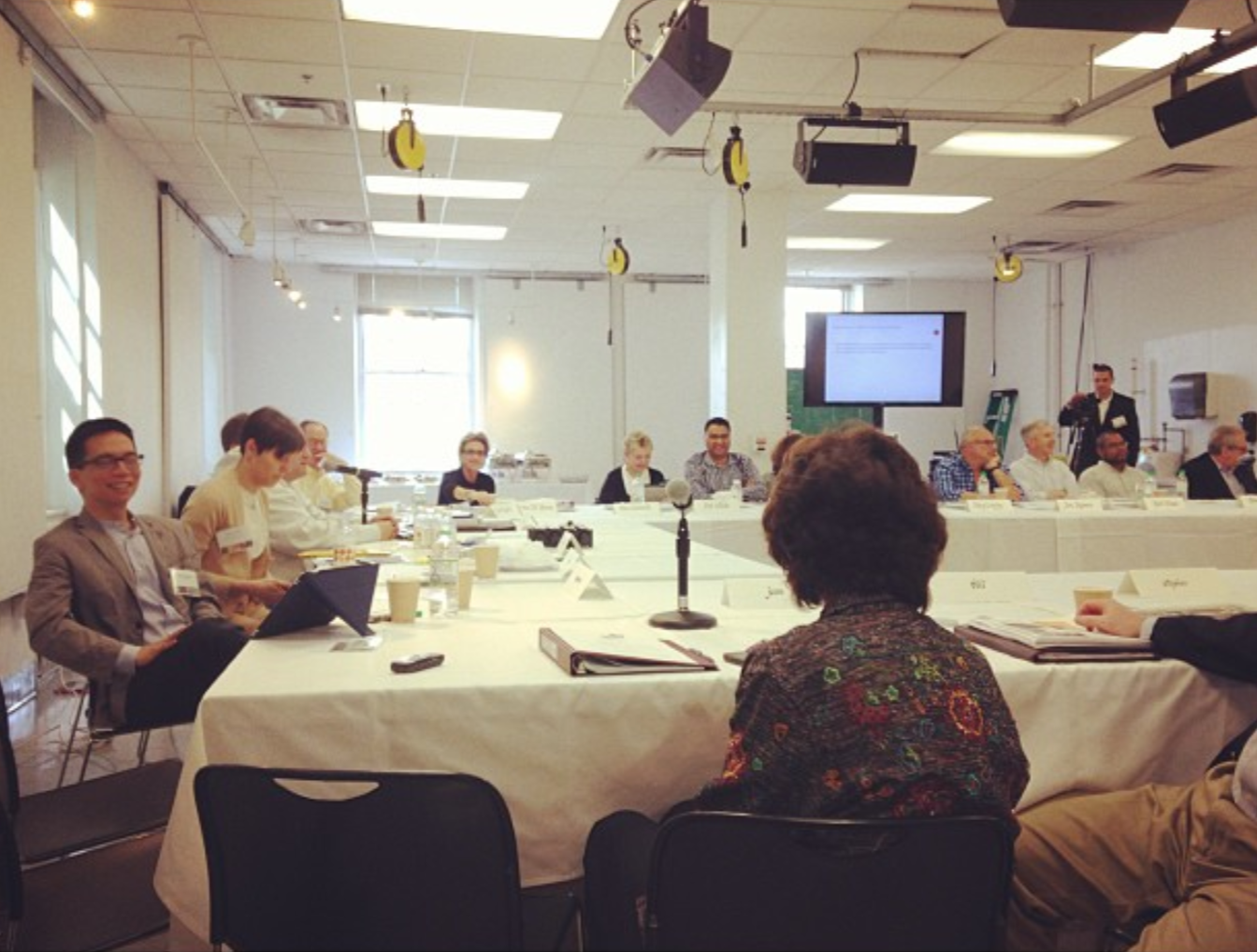
Meeting RISD’s president at the time, John Maeda, was not easy as he was a very busy public figure. He did offer office hours for students, where we could sign up for one of the coveted 10-minute time slots. Only one slot per student was allowed. We wanted more time with him, so different people in the group signed up for two time slots side-by-side, so that we could have a total of 20 minutes with the President. President Maeda was a bit surprise when we pulled this on him, but it was an important meeting that put GI on his radar and the “stunt” made us memorable.
Soon after, I was invited to represent GI and speak during a Board of Trustees meeting. It was another great opportunity to get us on the radar of the enigmatic group of people that controlled the big decisions for our institution. I probably got annoying to the administration at one point, but the continuous touch points with various actors in the administration helped us establish ourselves as a serious organization that was on a mission and wasn’t going away any time soon. Anytime somebody thought of anything “global”, they would think of us.
Challenge #3: Meeting Sleep-Deprived Art Students Where They Are
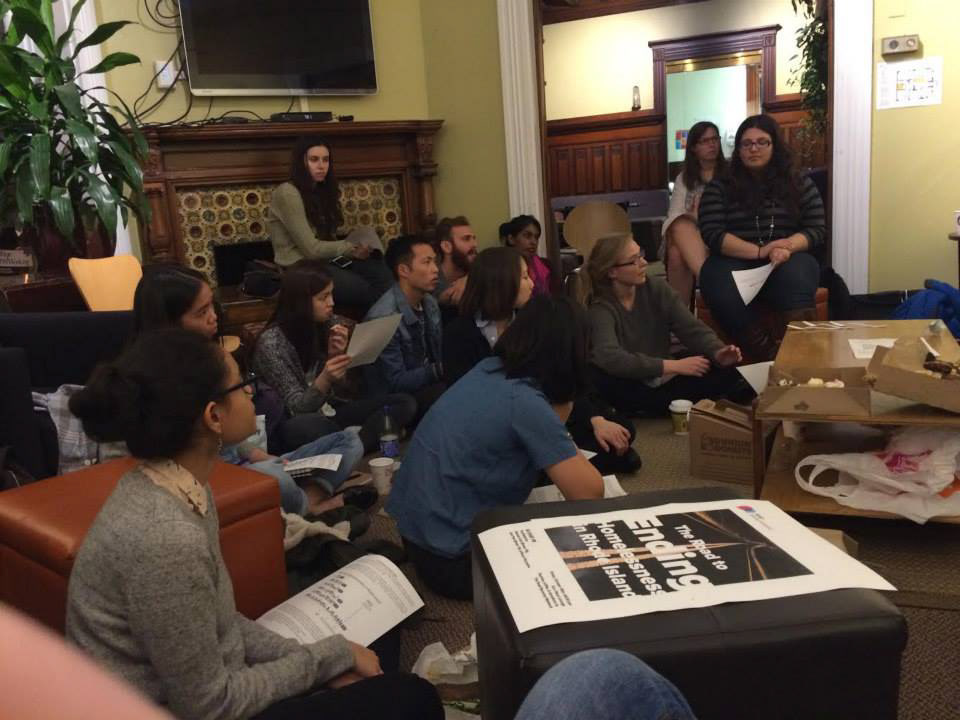
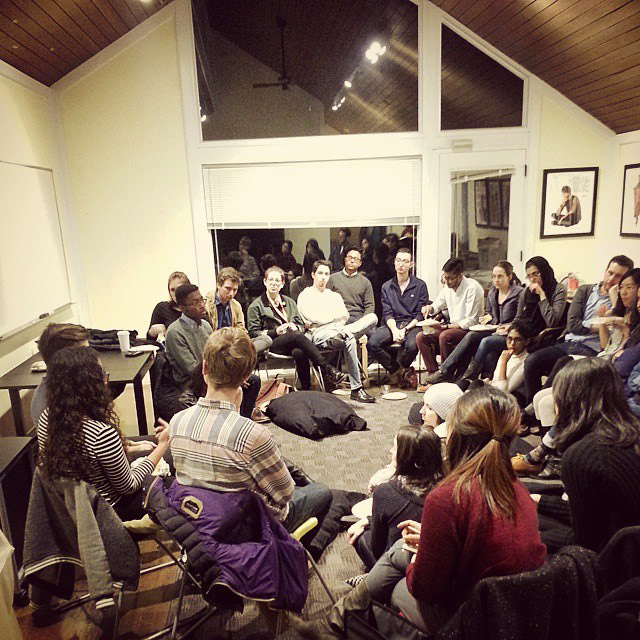
GI Chats
How do we get RISD students angry about local and global issues? How do we get them to discuss issues they care about and create a dialogue that is not forced or structured? The answer: make it hard to miss and pay for dinner.
How do we get RISD students angry about local and global issues? How do we get them to discuss issues they care about and create a dialogue that is not forced or structured? The answer: make it hard to miss and pay for dinner.
Having ten people show up at an event is considered a “good turnout” for RISD. We’re notorious for not being involved with anything else outside our studios. Understanding who our audience was, we made sure that we were very strategic about engaging them.
GI Chats is a student-led chat series where any student can request or lead a “chat” on a particular issue they are interested in. GI helps students provide the space for the event, advertise it, and pay for a catered dinner. We held the chats in Carr Haus, our student lounge space that many students walk through on a regular basis. We intentionally chose a familiar high traffic spot that students couldn’t miss. We also made sure we provided dinner at all the chats, recognizing that even busy art students had to eat one way or another.
To date, RISD GI has had 22 chats led by students and have created a culture of dialogue around the issues we care about. It is an example of making seemingly distant issues accessible and visible to students. Seeing a bunch of RISD students in the lounge at night, passionately talking about issues they care about is something I believe reinforces in other students that RISD is a place where art and design students are not only allowed to engage in public discourse but are expected to.
Eat the World
Eat the World is a major Providence wide event that shows off the diversity of RISD students. The idea was to hold an global food fair where students would volunteer to cook dishes native to their home country, sharing their culture along with their food to fellow students. RISD GI would pay for the ingredients and provide the stalls, and students would do the preparations and selling.
It involved quite a lot of logistical planning. We had a few blocks of a street by campus blocked off, secured sound equipment for performances, all the necessary tables and chairs, hand made the wooden stands that displayed the country signs, bought thousands of paper plates, cups, bowls, and cutlery depending on the cuisine students were making, approved dozens of recipes and the expenses involved in them, had posters made and publicized, etc.
But a couple weeks leading up to the event date we heard some bad news. As per Providence health code laws, we could not make and sell food in public if the food was not made in a commercial grade kitchen facility. This was quite unexpected. The students running the food booths were going to prepare all the food in their own facilities—whether that be their communal quad kitchens or off campus apartments. We had no logistics in place to rent out a commercial grade kitchen at all.
When we initially were informed of this sudden news, it was truly a moment of panic. We had a lot more left to do until the d-day, so this new hurdle was quite a big one. We entertained the idea of ordering food from restaurants, but it was too expensive and limited in terms of the diversity of cuisine. That's when we had an idea—we could try partnering with the school's dining facilities. With less than two weeks to go, we hurriedly set up a meeting with the director of RISD Dining Services, and talked through our options. It was quite short notice, and after all, the dining facilities still had students to feed every day.
Thankfully, we sorted out an arrangement with Dining Services where groups of students could come into the facilities during the off hours, in timed slots. We mobilized the dozens of students running the 27 booths and had them sign up for time slots. Students had access to all the large scale equipment they needed to prepare over a hundred servings of each of their recipes. Dining Services were even able to give students access to pre-chopped ingredients that would save them prep time. We were able to use their walk-in commercial grade refrigerators to store prepped food the day before the event.
Photos by Jennifer Mai
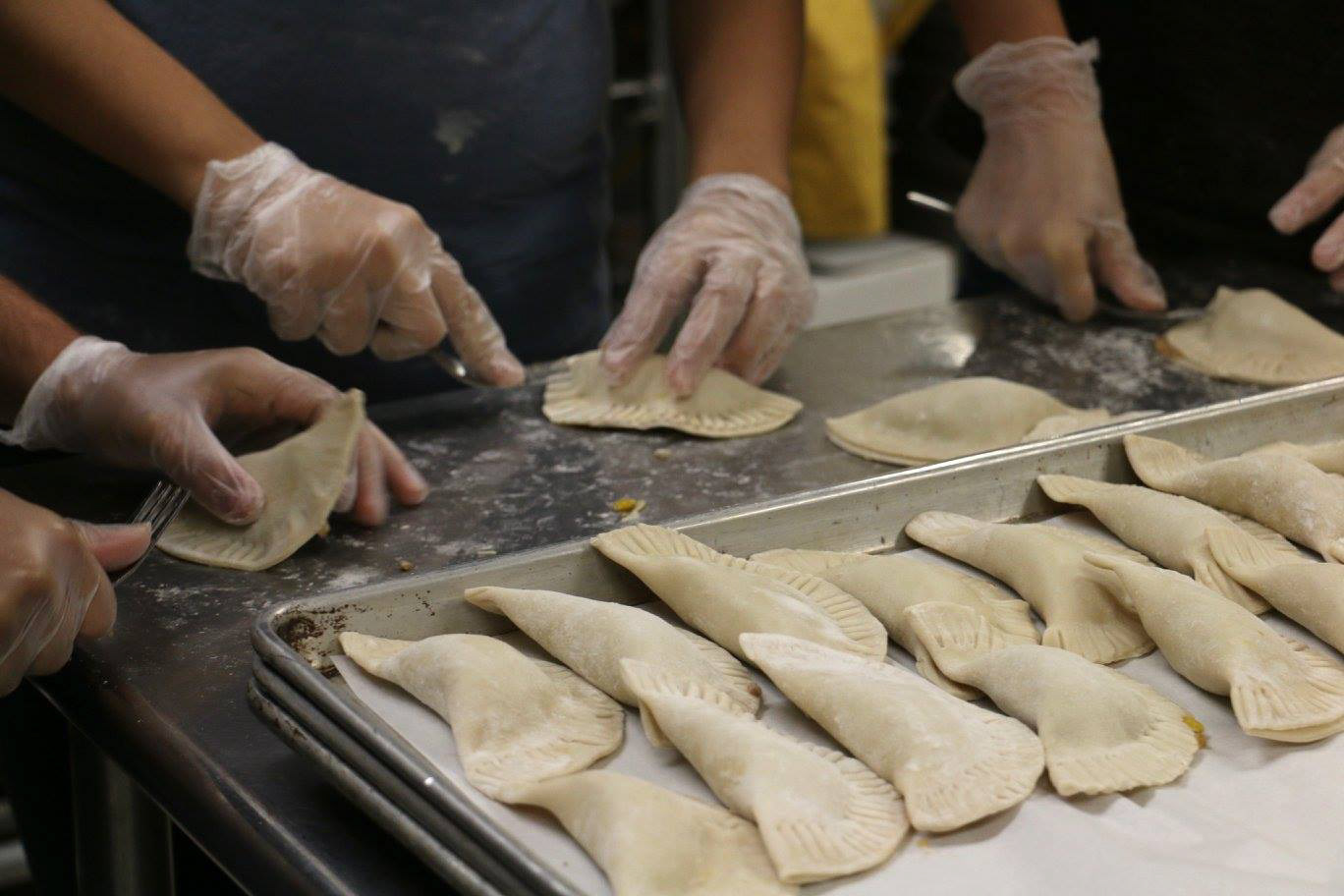
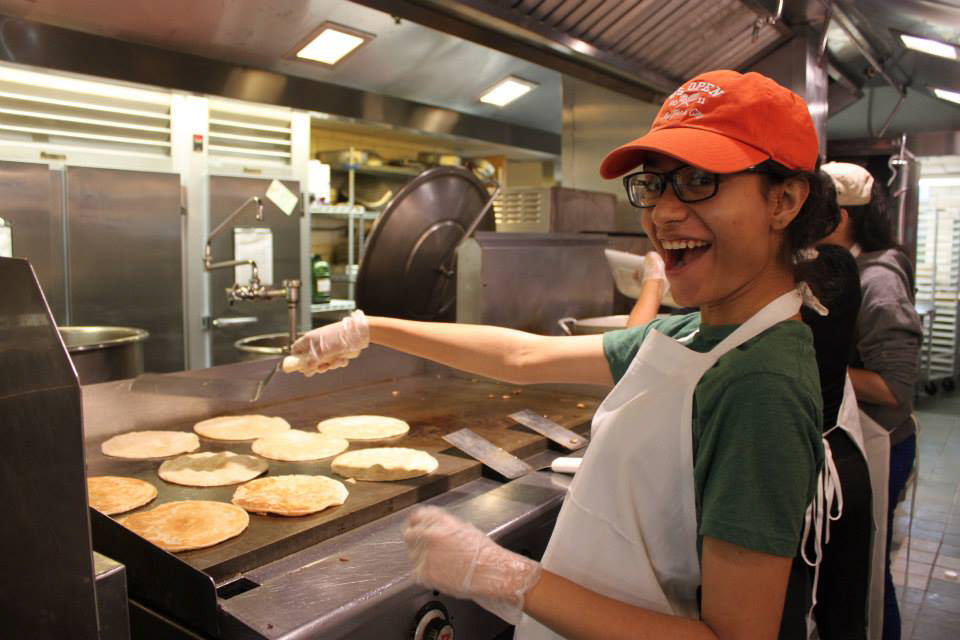
In the end, the unfortunate news of the health code laws turned out to be a great opportunity for us to build a strong partnership with RISD Dining Services. For Dining Services, it was also a great opportunity for their student outreach and engagement outside of the regular dining services they typically provided. The partnership between RISD GI and Dining Services is in its 5th year and has expanded into other engagements melding culinary arts and global issue. The first Eat the World attracted over 600 people in its first year, and garnered interest from the broader Providence community. In its 5th year now, it has attracted 1200 people not only from RISD but neighboring colleges and Providence residents.
Media:
Brown Daily Herald Culture, food celebrated at Eat the World
Our RISD Eat the World: Tasteful Diplomacy, Students Celebrate Diverse Cultures
Brown Daily Herald Culture, food celebrated at Eat the World
Our RISD Eat the World: Tasteful Diplomacy, Students Celebrate Diverse Cultures
Photos by Jennifer Mai unless otherwise noted.
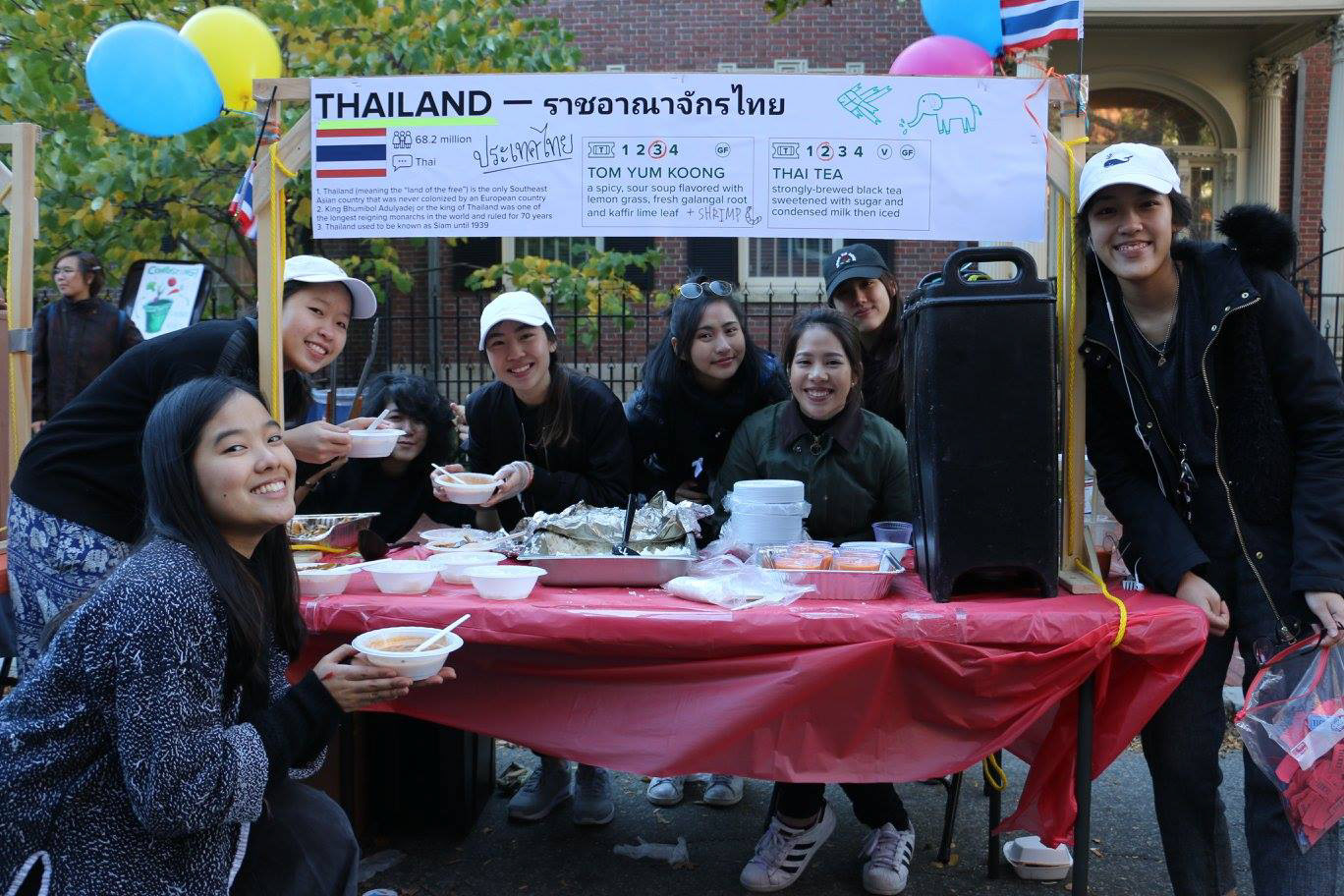
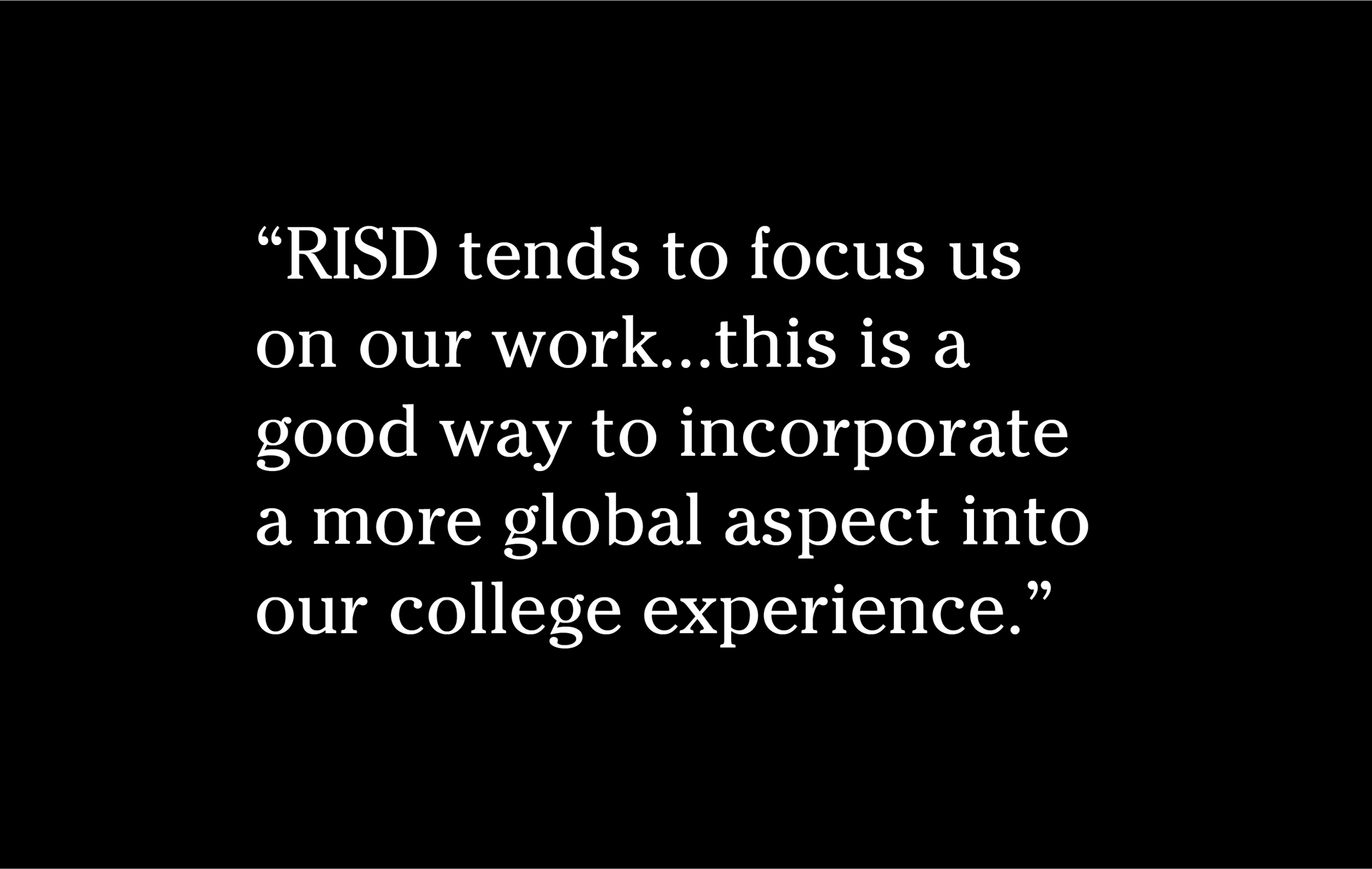
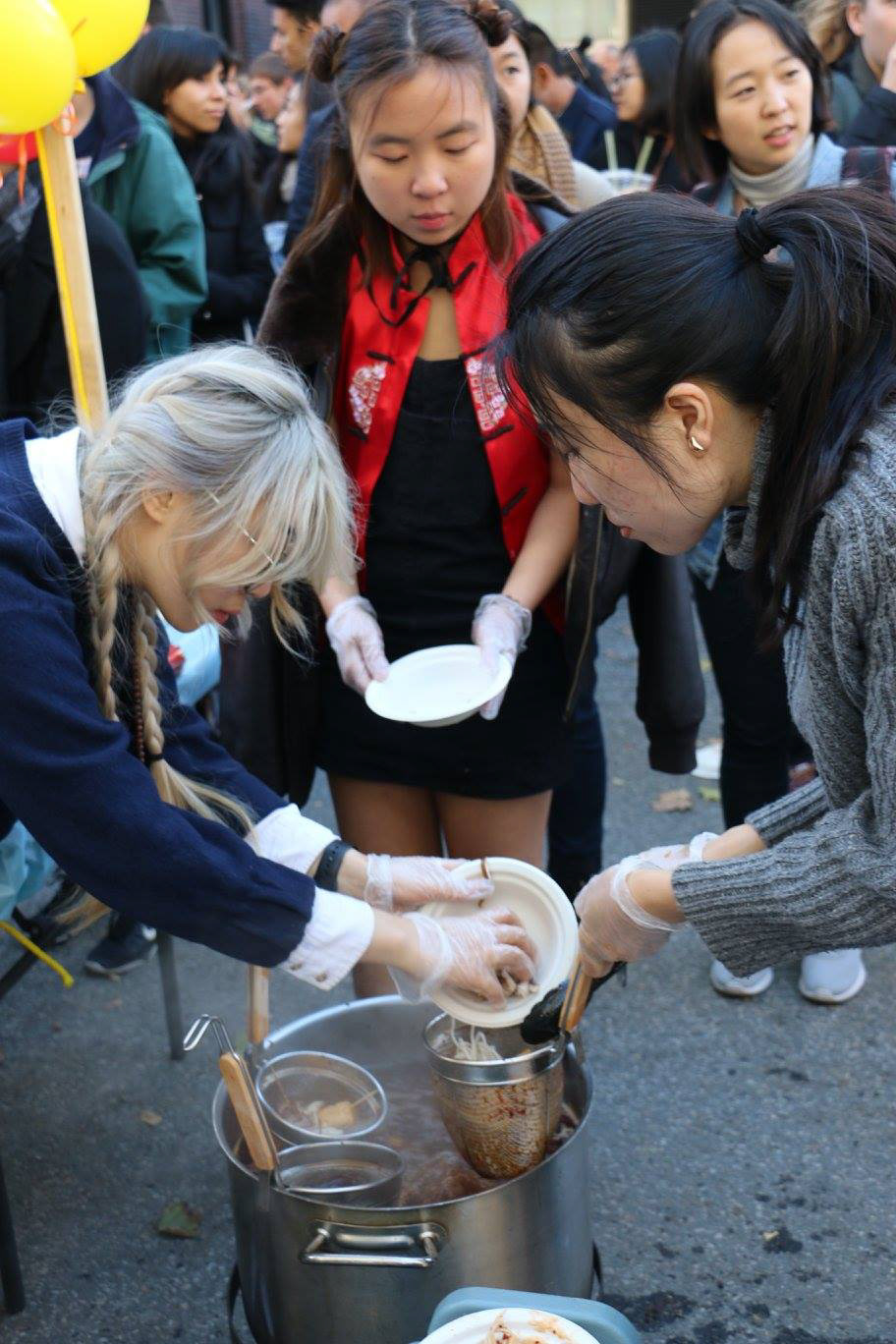
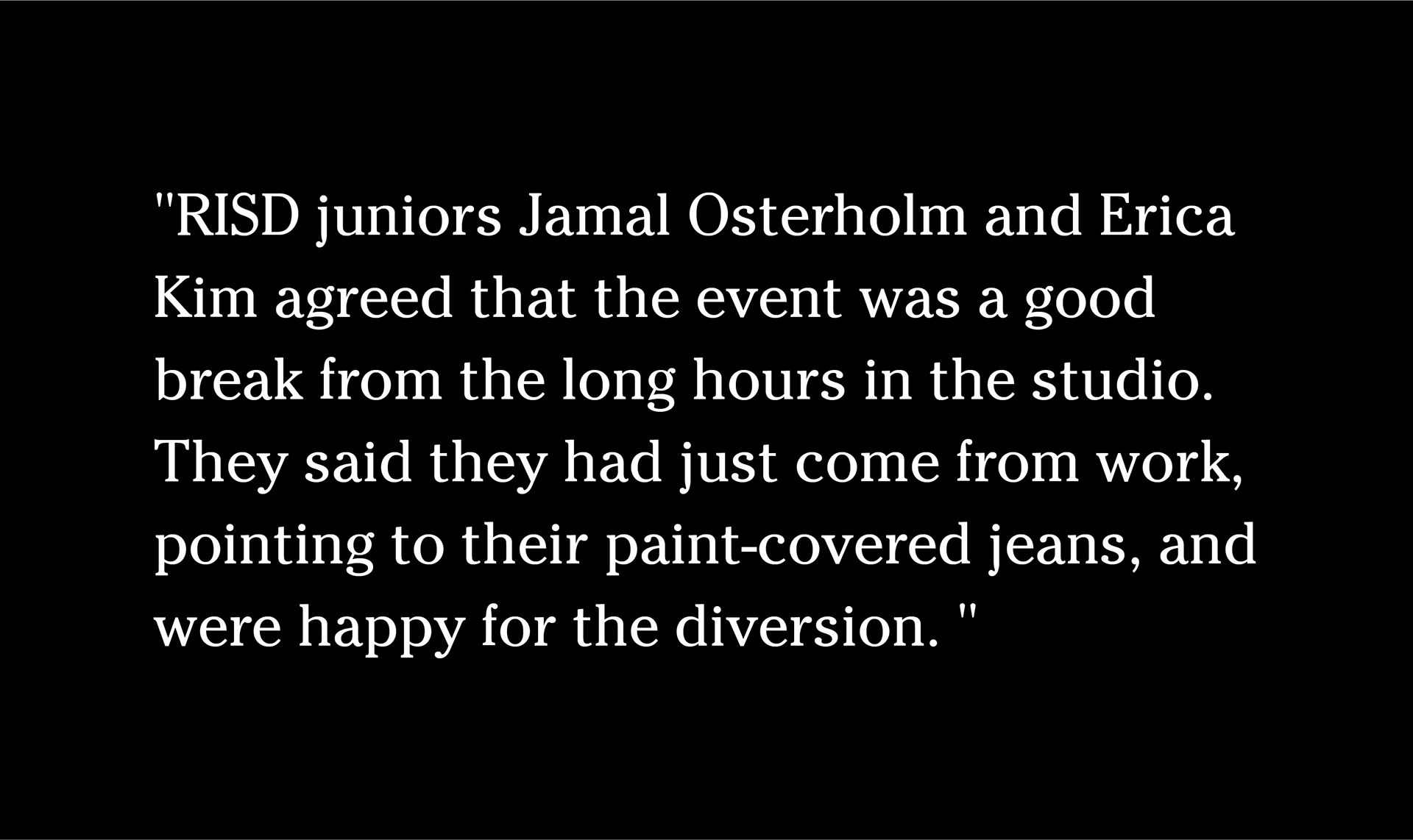
Photo by Diyi Zhang
Photo by Diyi Zhang
Challenge #4: Leadership Transition
One of my biggest worries after leaving RISD was about how RISD GI could continue growing and evolving. Even while starting RISD, I was already thinking of the next leadership—how could I start grooming the next president and how could I make sure that they were not merely following what I did during my year and a half as president, but redefining and evolving their role and GI’s vision for the better?
I had to empower them early on, make sure their ideas were driving the organization and pushing it to their limits, not mine. I always asked team members, “What do you think? What are your thoughts on this?” After handing over GI fully to the next president, I did still stay involved to the extent that the succeeding president had questions or needed advice. I remember holding back from reaching out to the team with ideas, some of the members who were still friends. Even though I had left, I was still excited about GI and what they had in store next. But I knew that staying too engaged and close to the new team would actually hurt their autonomy, and thus the longevity of the organization.
Impact
Today, RISD GI is on its 5th year and has grown into an incredible organization that students, faculty, and the administration go to for support in a wide range of issues. Since I left in 2014, the organizational structure has evolved into a larger executive team—President, VP, Secretary, Creative Director, Program Coordinator, etc. The organization keeps growing—and each year, I see a new injection of ideas and a growing number of student engagement in public issues and public dialogue. Below are just some of the achievements of RISD GI since its founding:
—All RISD students receive free digital New York Times subscriptions
—Eat the World is in its 5th year and has attracted over 1200 people, including students from neighboring schools and Providence community members
—22 GI Chats held to date
—Strong partnerships across different offices of the administration, creating a wide base of high-level support (Office of President, Office of Student Affairs, Office of International Student Services, Office of Global Partners and Programs)
—National flags of graduating students displayed during commencement ceremony as of 2014
—Increase in student response to current events
—Increase in partnerships between student activist groups and community organizations